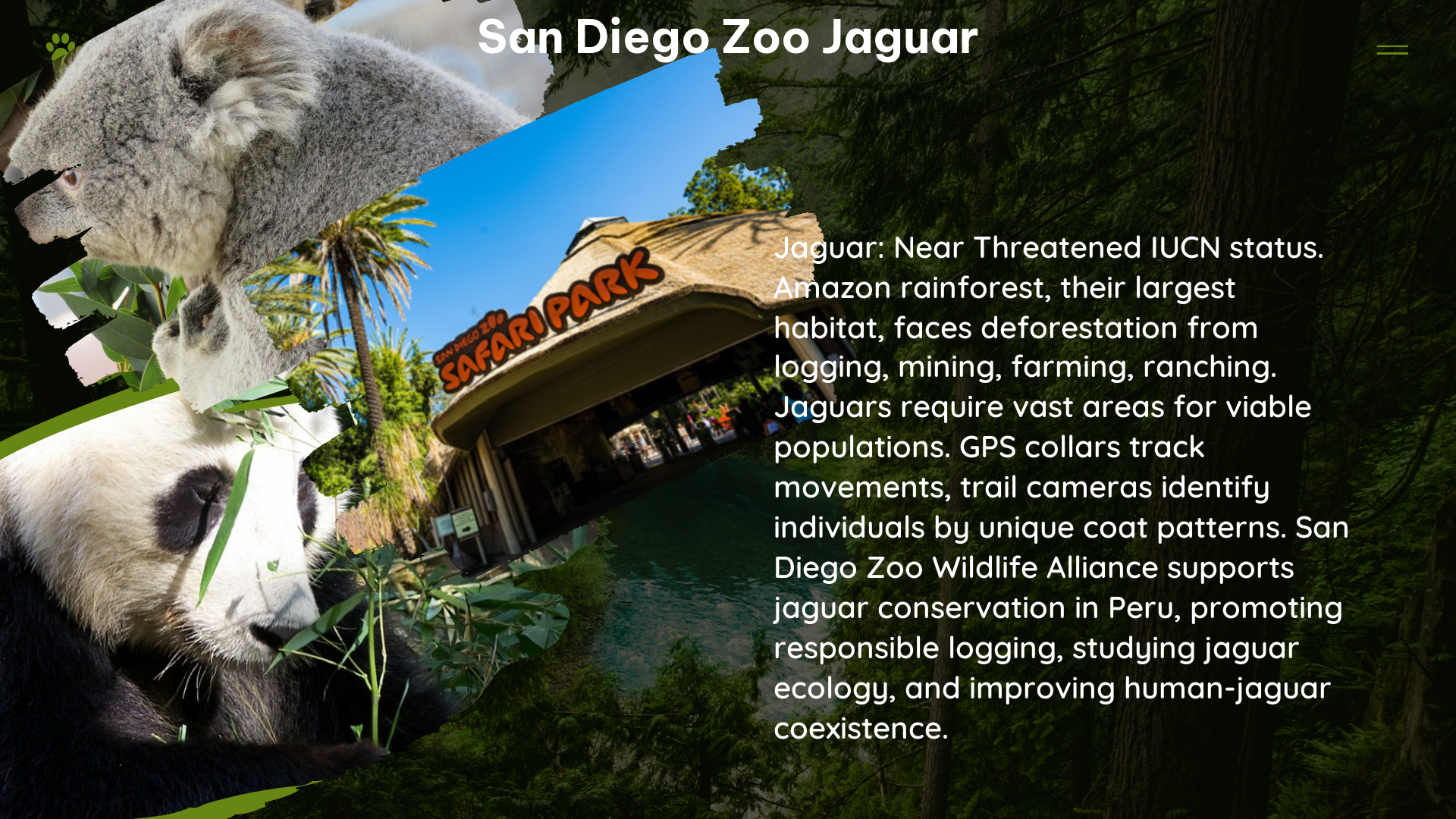Species Overview
Jaguars (Panthera onca) are the largest cats in the Americas, known for their powerful build, muscular limbs, and large paws that enable them to climb trees, traverse forest floors, and swim in rivers and streams. They are solitary, elusive, and often nocturnal animals, making them challenging to study, especially in dense or remote habitats. Jaguars are currently listed as Near Threatened by the IUCN due to habitat loss, human-wildlife conflict, and illegal hunting for body parts.
Habitat and Distribution

Jaguars are native to the Americas, ranging from southern Arizona in the United States to Argentina. They thrive in various habitats, including tropical rainforests, grasslands, and deserts, with the Amazonian rainforest being their largest remaining habitat. However, this ecosystem is rapidly changing due to logging, mining, farming, and ranching, leading to habitat fragmentation and increased human-wildlife conflict.
San Diego Zoo Jaguar Exhibit
The San Diego Zoo is home to a remarkable jaguar exhibit, providing visitors with a unique opportunity to observe these magnificent felines in a naturalistic setting. The exhibit features a marshy wetland habitat with rocks, trees, large branches, and a stream that flows into a large pond. This environment allows the jaguars to exhibit their natural behaviors, such as climbing and swimming.
Jaguar Enclosure Details
- Marshy wetland habitat with rocks, trees, and a stream
- Large pond for swimming
- Ample space for the jaguars to roam and exhibit natural behaviors
Jaguar Viewing Opportunities
- Visitors can observe the jaguars from various vantage points around the exhibit
- Scheduled animal presentations and keeper talks provide additional insights into the jaguars’ behavior and conservation efforts
Jaguar Enrichment and Care
- The San Diego Zoo’s animal care team works diligently to ensure the jaguars’ physical and mental well-being
- Enrichment activities, such as hiding food or introducing new objects, stimulate the jaguars and encourage natural behaviors
Conservation Efforts
The San Diego Zoo Wildlife Alliance is actively involved in jaguar conservation through collaborative efforts in Peru. They work with local communities to protect jaguar habitats, preserve rainforests, and promote peaceful coexistence between jaguars and humans. The Alliance also supports research and fieldwork to better understand jaguar ecology and improve conservation strategies.
Jaguar Research and Monitoring
- The San Diego Zoo Wildlife Alliance conducts field research to study jaguar populations, behavior, and habitat use
- This data is used to inform conservation strategies and guide decision-making
Community Engagement and Outreach
- The Alliance collaborates with local communities in Peru to raise awareness about jaguar conservation
- Educational programs and workshops help foster a sense of stewardship and promote coexistence between jaguars and humans
Habitat Protection and Restoration
- The San Diego Zoo Wildlife Alliance supports initiatives to protect and restore jaguar habitats in Peru
- This includes working with partners to combat deforestation, illegal hunting, and other threats to jaguar populations
Adopt a Jaguar Program
The San Diego Zoo Wildlife Alliance offers an Adopt a Jaguar program, which allows visitors to contribute to jaguar conservation efforts. The program includes a soft 12″ jaguar plush, a 5″ x 7″ Jaguar Adoption card, a backpack, a beach towel, a thermos, and a limited edition pin. This symbolic adoption supports the Alliance’s conservation initiatives for jaguars in Peru.
Visiting the San Diego Zoo Jaguar Exhibit
The San Diego Zoo is open daily from 9:00 AM to 6:00 PM, with extended hours during the summer season. Admission rates vary, with discounts available for children, seniors, and members. The zoo encourages visitors to plan their visit in advance by checking the daily schedule of activities and animal presentations.
Plan Your Visit
- Check the San Diego Zoo’s website for up-to-date information on hours, admission rates, and daily schedules
- Consider purchasing tickets or memberships in advance to avoid long lines at the entrance
Maximize Your Experience
- Arrive early to avoid crowds and have the best chance of seeing the jaguars during their most active periods
- Attend scheduled animal presentations and keeper talks to learn more about the jaguars and the zoo’s conservation efforts
- Explore the entire zoo to see a wide variety of animal species and exhibits
